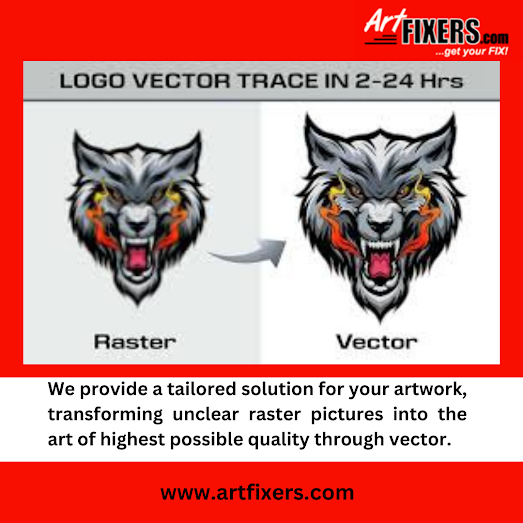The massive majority of digital picturesyou encounter in daily life are raster images, from the photos you take on our phones through to GIFs you share on social media. Furthermore, raster images come with their own disadvantages. First, raster images are made up of pixels, and are ultimately intended to be displayed at a set resolution. This signifies that resizing or zooming will definitely come with some loss of image quality.
There are number of reasons behind the predominance of raster images and why you need your images to Convert To Vector:
1. Web browsers stand many of the most common types of raster image formats
2. Raster images are perfect for purposes such as photography
3. Examining a paper drawing will create a raster image
4. Most of the popular image editors, such as Photoshop, work with raster images
Second, raster images have no frame; they are simply a map of variouscolors. This indicates that CAD programs cannot elucidate what the image represents nor distinguish between different components within the image. This also makes it very difficult to convert the image to a CNC-compatible format, like G-code.In case your image is saved in a raster file format, and you need to use it for CAD or CNC goals, then your only solution is to convert image into vector format.
Are you looking for the solution to vector my image:
Vector file formats provide the users an entirely different way to store image data. That’s due tothe eschew pixels and rather they opt for objects. This states that, instead of displaying colordetails, they display the individual component of an image. Elements when doing vector image can involve lines, curves, shapes, and text, amongst other object categories.
The next benefit to Vector My Image is that all components of the image are different from one another. This creates it to be easier for CAD and CNC control software to use and interpret the image, and also enables the users to attach data to individual objects. For instance, if you were using architectural CAD software, you could indicate the building material for a special wall.
Along with the positives above, vector images generally come with smaller file sizes, too. Since, raster and vector images operate using complete separate principles, converting an image to vector also called as vectorization is more complicated. The sole way to accomplish this conversion is through tracing over a raster image. There can be other two ways to complete the tracing procedure:
Manual tracing. This comprises opening your raster image in a program like Inkscape, Illustrator or SketchUp, adding a new layer on top of the already existing image, and then drawing vector lines, shapes and text that shows the content of the raster image.
Automatic tracing. Vectorization software, like Scan2CAD, can automatically discover the lines, shapes and objects present within an image. From this, they can then produce a vector representation of the raster image. It’s can become easy to detect text and even the handwritings.
Read More: What are the 3 different ways to convert any picture into vector?
For more details, visit site - Artfixers.










